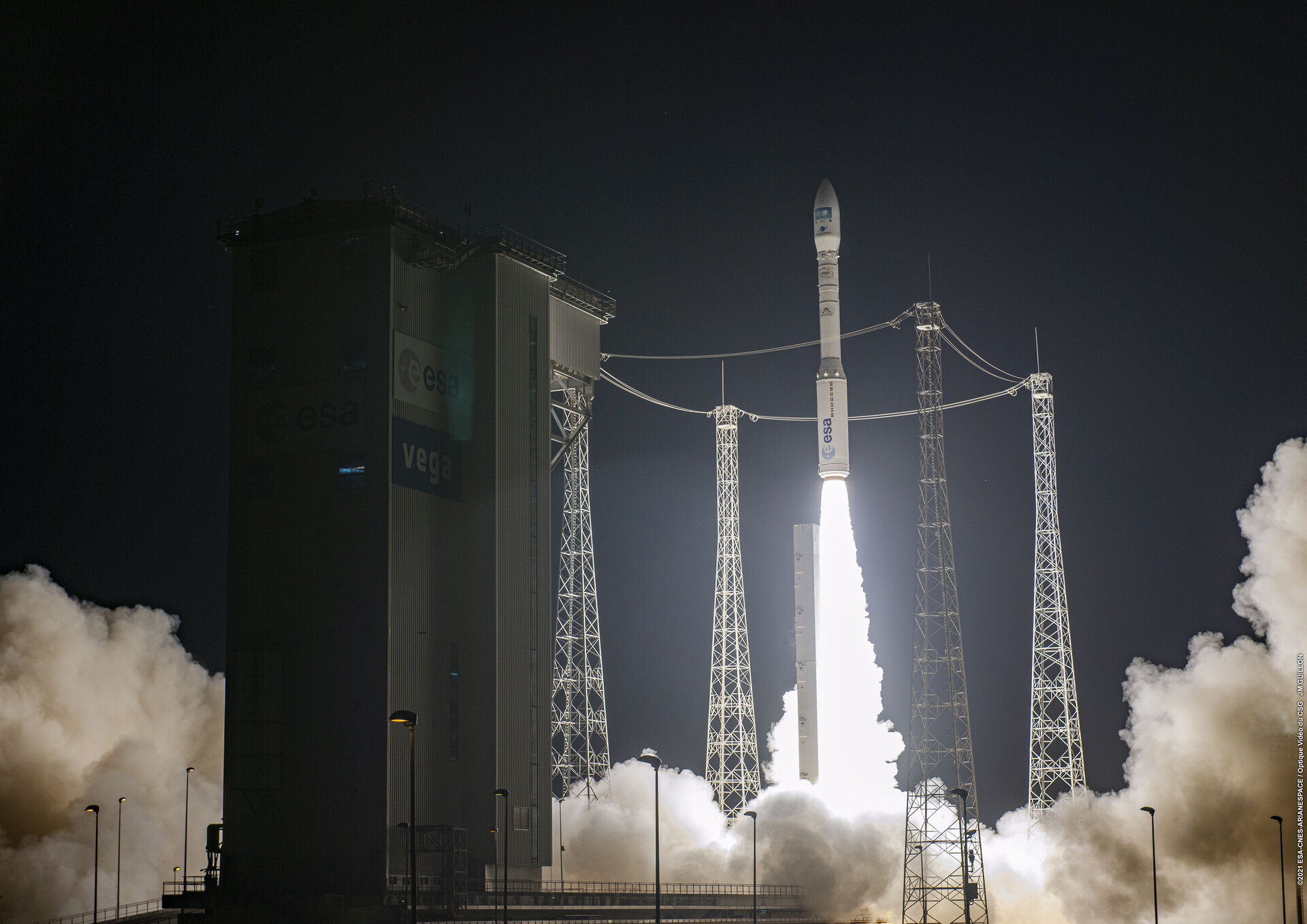
On April 29 at 01:50 UTC, Arianespace’s Vega rocket lifted off from the pad in Kourou, French Guiana for VV18. This was Vega’s return-to-flight mission after the failures of flights 15 and 17. And no, we didn’t skip a mission; Vega flight 16 was successful. It just had the misfortune of being squished between two not-so-nominal launches.
For a bit of history, flight 15 failed in July 2019 due to a structural problem with the second stage, and flight 17 failed in November 2020 because — and I cannot make this up — someone reversed cables on the fourth stage’s guidance system, resulting in the opposite of the intended maneuvers and the rocket spinning out of control.
Now that I’ve talked about the reasons why this launch had a few people on edge, let’s focus on the payloads. For this flight, everything was perfectly nominal, and Pleiades Neo 3, the primary spacecraft, was successfully inserted into orbit just under an hour after launch. After two more burns that took 101 minutes, five additional CubeSats separated from the fourth stage.
Pleiades Neo 3 is the first of a constellation of high-resolution commercial imaging spacecraft. When the full constellation of four spacecraft is in orbit, it will allow for images to be taken of the same site twice a day, and the company will support requests for images to be processed 30 minutes after acquisition.
The five CubeSat payloads include two AIS ship tracking satellites for Spire, a spectrum survey satellite for Aurora Insight, a satellite for the Norwegian Space Agency, and an Internet of Things satellite for Eutelsat.
More Information
PDF: Arianespace launch kit
Vega Flight VV15: Findings of the Independent Inquiry Commission’s investigations (Arianespace)
Loss of Vega Flight VV17: Identification of source of anomaly and establishment of Inquiry Commission (Arianespace)
Lemur-2 info page (Gunter’s Space Page)
AII info page (Gunter’s Space Page)
NORSAT 3 info page (Gunter’s Space Page)
ELO Alpha info page (Gunter’s Space Page)
Launch video




 Join the Crew!
Join the Crew!
 Escape Velocity Space News
Escape Velocity Space News
0 Comments